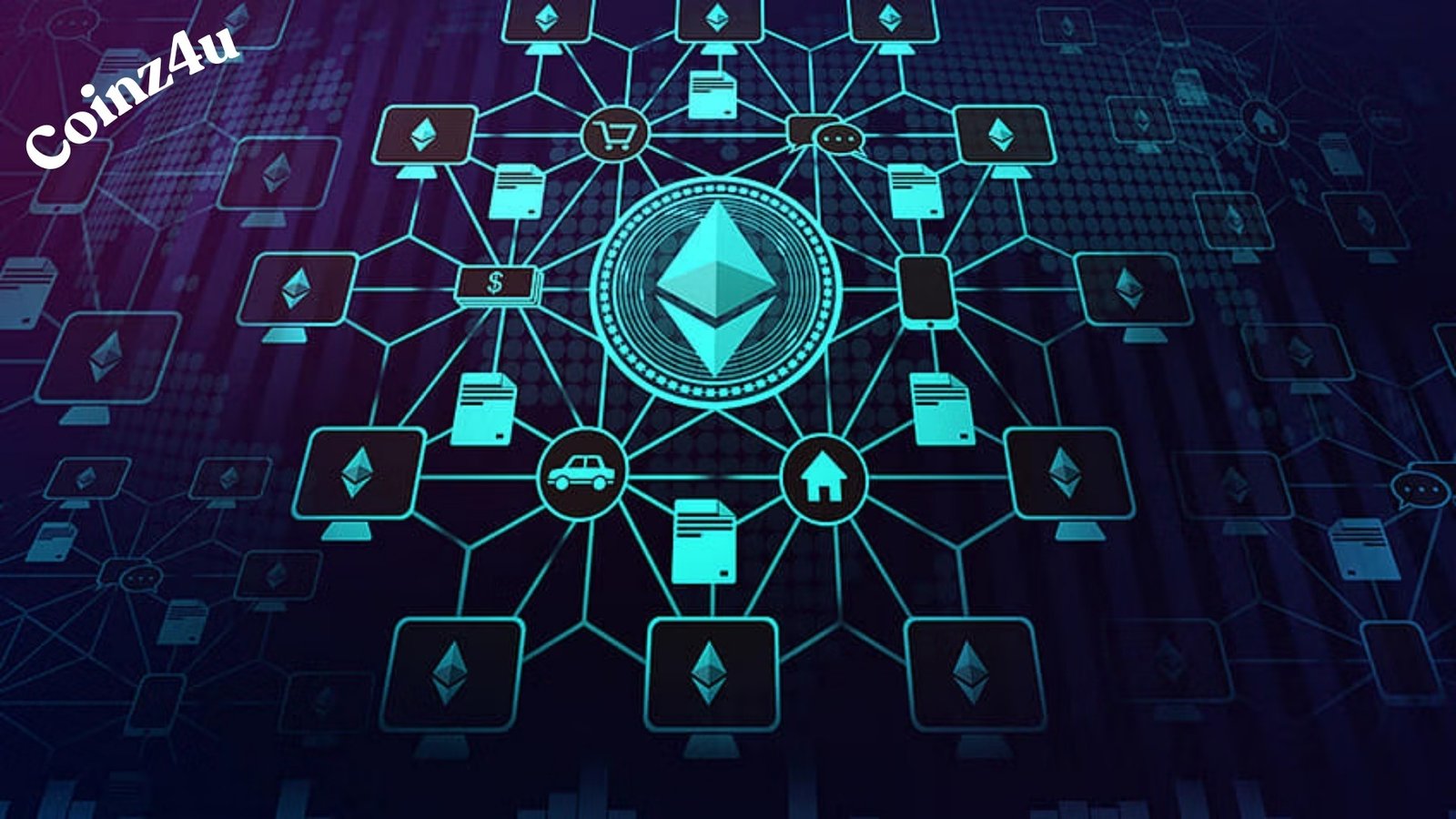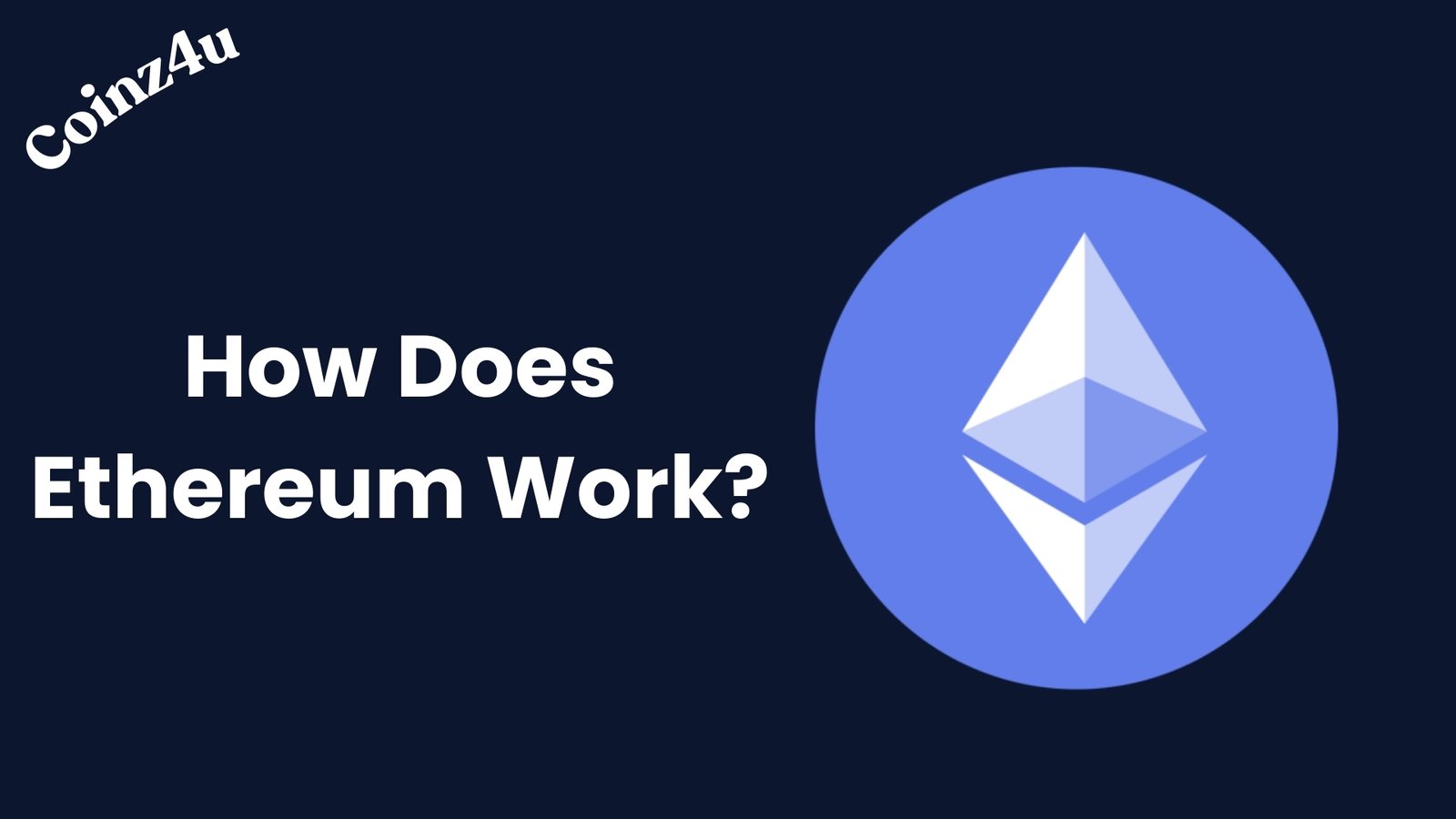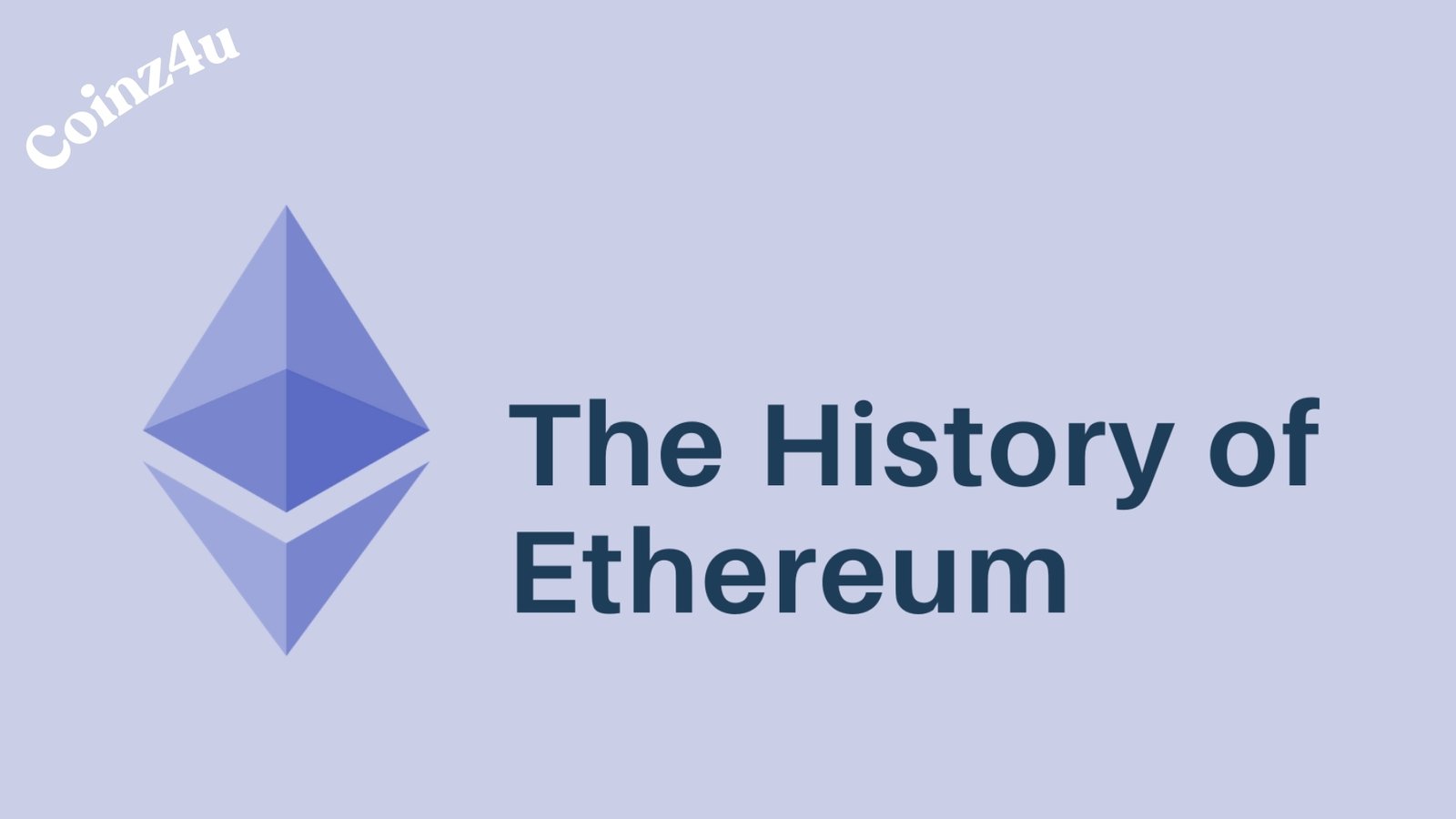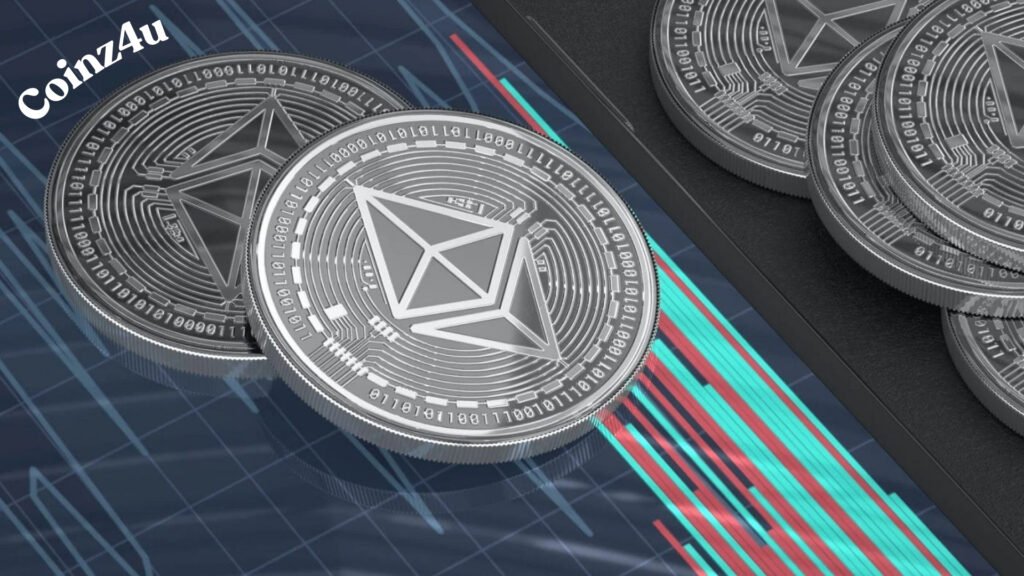What is Ethereum: Guide to the World’s 2nd Largest Cryptocurrency. There are many ways in which the revolutionary Ethereum platform is leading the charge for blockchain technology. This comprehensive explanation explains the basics for those unfamiliar with Ethereum. Ethereum recasts Blockchain’s allure by demonstrating that blockchain technology is capable of far more than simply a decentralized digital currency system. Although most newbies think of Blockchain, they hear “cryptocurrency,” just one part of the technology.
Remember that “the internet” encompasses much more than just electronic mail? So, we don’t claim that e-mail is the internet. Ethereum is unique among blockchain platforms because it is both open-source and programmable. As a result, the users take the wheel and create their own apps.
This programmable blockchain platform, which focuses on digital assets, pioneered decentralized applications, smart contracts, virtual machines, ERC tokens, and other cutting-edge ideas. Since this Ethereum tutorial is more suited to newbies just starting to learn the ropes, we will spend most of our time covering the basics of the platform and its background.
Understanding Ethereum
The open-source and programmable Ethereum platform facilitates the development of smart contracts and decentralized applications; it is a public blockchain that is not centralized. To explain it more technically, Ethereum is a state machine that relies on transactions to move from one state to another. This means that the system takes a series of inputs and uses them to determine the next state to enter. The basic principles of a conventional blockchain are put into play when the transactions are grouped into blocks.
A consensus algorithm verifies the transactions among the network’s users. While Ethereum has relied on Proof-of-Work (PoW) for consensus from the start, the network plans to switch to Proof-of-Stake (PoS). Ether, the platform’s intrinsic digital money, is also available. Gas is an additional commodity-based money on the site.
What Is A Smart Contract?

As you will learn in this Ethereum tutorial, intelligent contracts are essential in the Ethereum network. The Ethereum platform is designed to facilitate the generation of smart contracts using a decentralized, peer-to-peer network. Developers may customize a “smart contract” code to do specific tasks. These scripts are often written in Solidity and are considered to be at a high level of programming. Nevertheless, languages like Serpent or LLL can be utilized. Smart contracts are based on a fundamental principle: once all the conditions are satisfied, the agreement between two or more parties can be considered closed.
Here’s an example from the Ethereum documentation that should help you understand the platform better. Assuming X and Y are business partners, they agree that X will send 10 kg of rice to Y within ten days in exchange for $10. After going over the parameters, they decided to make a smart contract. X will now get the cleared funds into their account automatically upon appropriate completion of the deliverables.
What are ERC Tokens?
One of the most significant advantages of the Ethereum platform is that it allows other developers to build their applications using Ethereum’s codebase or token standards. Other developers are inspired to encourage innovation by this quality. The standards for applications on the Ethereum platform are known as Ethereum Requests for Comments, or ERCs. Vitalik Buterin, Ethereum’s original creator and visionary, proposed the ERC-20 token standard, which other apps can use. Because of this, ERC-20 is the native token of choice for many initial coin offerings (ICOs).
ERC standards can be proposed and created by anyone. Notable standards include ERC-721, ERC-223, ERC-777, ERC-1155, and ERC-1337. Given its status as a non-fungible token (NERC-721), it commands particular attention among the standards. Unique and uncommon virtual assets are the focus.
How Does Ethereum Work?

At this point in the Ethereum tutorial, we will study the protocol’s inner workings. Ethereum follows the same protocol and uses the same blockchain architecture as Bitcoin. One way to look at the Ethereum blockchain is as a state machine that processes transactions. The machine merely enters a new state when the transaction execution begins.
Now, millions of transactions make up each Ethereum state. Connected blocks represent the logical organization of these transactions. The mining process validates the transaction before it is added to the ledger, which is necessary because it uses distributed ledger technology (DLT). There is a lot of competition among miners to be the first to create a block. The miner receives Ether tokens as soon as they make a block.
EVM- Ethereum Virtual Machine
Before Ethereum, blockchain applications could only execute a small subset of the available operations. Then Ethereum’s breakthrough, EVM, emerged! The Ethereum Virtual Machine is a Turing-complete software that smart contracts use as their runtime environment.
It allows any user to execute the program, regardless of the resources the programming language allocates. This means that Ethereum (ETH) eliminates the need to create a separate blockchain network for applications and instead facilitates the development of hundreds of applications on an existing platform. This virtual computer is used by every Ethereum node, allowing apps to function decentralizedly even without developing their Blockchain. Several other programming languages have been integrated into the Blockchain Ethereum virtual machine, including Rust, JavaScript, C++, Go, Python, Ruby, and Java.
Ethereum Blockchain Applications- DApps (Decentralized Applications)
Decentralized applications are the focus of this section of the Ethereum tutorial. While centralized and decentralized programs accomplish the same goals, the latter operates on a network of nodes instead of a single server. DApps offer unmatched autonomy, security, ease of implementation, open-source nature, and guaranteed 100% availability.
Most Promising Ethereum dApps
Golem
Anyone can access Golem, an open-source, decentralized supercomputer that is accessible worldwide. It employs the Ethereum-based transaction system to facilitate the settlement of payments among suppliers, requestors, and developers. All computations are isolated from the host computers in a sandbox environment.
OMG Network
The decentralized application OMG Network, formerly known as Omisego, aims to address the issues different financial institutions face. This network facilitates real-time peer-to-peer transactions and is an Ethereum-based scaling solution for the financial sector. With the OMG network, your digital assets stored on the chain are easily accessible and manageable.
Augur
The future of weather prediction is Augur. This platform for peer-to-peer predictions is built on the Blockchain and is decentralized and open-source. Despite its decentralized platform, Blockchainrancetential can forecast data for almost any business.
Civic
Ultimately, Civic wants to equip companies and individuals with the means to manage and safeguard their identities. Because of its decentralized architecture, it offers multi-factor authentication without credentials or third-party authenticators.
MetaMask
To access the Ethereum network, install the MetaMask browser plugin. As a bonus, it supports token swaps and peer-to-peer transactions. Decentralized Autonomous Organizations (DAOs) are another possible use case for Ethereum. The Ethereum blockchain powers DAO, an autonomous and decentralized organization. Ownership of DAOs is transferred to token purchasers. However, they do more than serve as a token; they are contributions that grant the right to vote.
History of Ethereum

To understand the history of Ethereum, we must begin from the very beginning.
2013 – Ethereum White Paper
The groundwork for the new currency was established in 2013. Ethereum was proposed by Vitalik Buterin, who was a Bitcoin programmer at the time. The initial white paper outlining Vitalik penned it. In the same year, he also suggested a model that used a generic programming language.
2014 – Ethereum Announcement
Mr. Vitalik proposed the idea at the North American Bitcoin Conference in January 2014. He also mentioned Jeffrey Wilckle and Dr. Gavin Wood, who worked together to create Ethereum. Earlier that year, he released the yellow paper outlining Ethereum’s official specs in April. Vitalik was also responsible for creating the first truly functional computer language. Ultimately, Ethereum was based on this.
The first transaction involving Ether was completed by July 2014. The money raised paid off our legal debts. In August of the same year, $14 million was retrieved from the sale of Ether. In September 2014, 60 million Ether was distributed to the Ethereum ICO purchasers. The remaining Ethereum tokens were given to the Swiss nonprofit foundation that Ether is affiliated with.
A DEVCON-0 gathering was planned for Berlin in November 2014. The Ethereum development community gathered from all over the globe for this event, which covered a wide range of topics related to Ethereum technology. Several talks during the event improved Ethereum’s scalability, security, and dependability.
2015 – Developers Support Ethereum
A program called DEVgrant was established in April 2015. Everyone from Ethereum’s creators to its most ardent fans should have benefited from the program. Funds for the Ethereum platform and its projects came from this program. Later, in July 2015, Ethereum’s first milestone was made public. The smart contract, The Frontier, significantly contributed to the Ethereum ecosystem. Additionally, blockchain technology was a focal point of the DEVCON-1 conference. Ethereum was a huge step forward since it was the cutting edge of technology.
2016 – Ethereum and Ethereum Classic
The Ethereum network was enhanced in March 2016. Homestead, an improvement protocol, performed the upgrade. The media gave Ethereum a considerable boost in May of that year. The improved coverage resulted in a $150 million public offering. The initial breach of Ethereum occurred in June 2016. The hackers said they made off with almost $50,000 worth of Ether. Multiple disagreements arose that same month as a result of this.
Two halves of the Ethereum network were created in July of that year due to disagreements in June. Ethereum Classic (ETC) and Ethereum (ETH) were the branches. Decentralized decision-making, additional protocols, and ways for resolving conflicts were the tools that Ethereum used. However, the core revolt, blockchain immutability, and code law were utilized by Ethereum Classic. As a result of the separation, Ethereum Classic became even more estranged from its developers, founders, business partners, consumers, and miners. These were the main points that set Ethereum apart from Ethereum Classic.
2017 – Enterprise Ethereum Alliance
The EEA, “Enterprise Ethereum Alliance,” was established in February 2017. Microsoft spearheaded the effort to adopt Ethereum blockchain technology in partnership with well-known banks and tech enthusiasts. More and more prominent groups and businesses joined the alliances as they expanded. At present, EEA has more than 300 businesses as its affiliates. Enterprise Ethereum allows companies to take advantage of the enhanced safety and productivity offered by the Ethereum platform.
2019 – The Constantinople and Istanbul Forks
Two significant hard forks occurred in Ethereum this year; the first was in February with the Constantinople fork, and the second was in December with the Istanbul fork. The system became more stable, and both branches optimized Gas prices for EVMs. Thanks to the Istanbul fork, Ethereum and Zcash are now more compatible and resistant to denial-of-service attacks. Additionally, it provided STARK and SNARK-based layer-2 scaling solutions.
2020 – Ethereum 2.0 and Beacon Chain Genesis
Launching Ethereum 2.0, also known as Serenity, with the introduction of Beacon Chain was a significant event for Ethereum in 2020. The improvement of the Shard Chains is anticipated to be released in 2021. Last but not least, 2022 is the year that the Mainnet and Beacon chains will dock or combine. Say farewell to energy-intensive mining with Ethereum 2.0’s Proof-of-Stack consensus.
Final Thoughts
When comparing blockchain platforms, Ethereum stands head and shoulders above the others regarding technical sophistication and innovation. The success of Ethereum will be determined by its real-world problem-solving capabilities and the capacity of other developers to facilitate the usage of Ethereum tokens for application developers. If the upgrade to Ethereum 2.0 goes well, the platform will be safer, more scalable, and longer-lasting than before.
[sp_easyaccordion id=”3644″]


